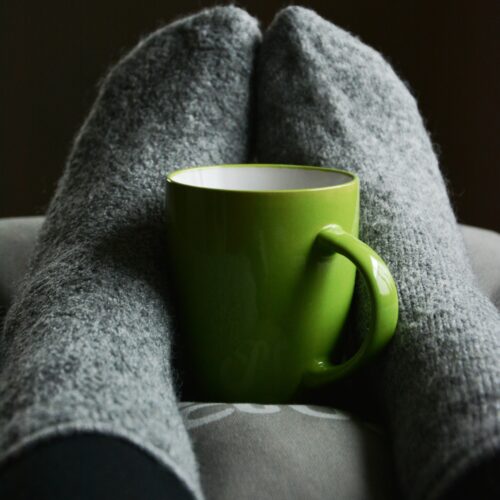
Textile art and design that conveys ethical messages
Following on from my previous blog post about sustainability in textiles I thought it would be a good opportunity to look at some textile practitioners and artists that use textiles to convey messages or evoke discussions about ethical issues. In the post I will use a number of practitioners to illustrate the diverse ways textile practices and materials are used.
Lucy Orta started her career as a fashion knitwear designer, influenced by the industries lack of consideration for resources and social responsibility Lucy became interested in how visual art can inform. In their collaborative work Lucy and her husband Jorge Orta explore the themes of water use and issues surrounding survival. They use three-dimensional sculptural forms to illustrate some of the twenty first century’s most pressing issues linked to the environment, including sustainable development, habitat, community, mobility, migration and climate change. Often the work uses clothing and sculptural garments as in the Refuge Wear project in which homelessness, the function of clothing and survival are investigated.

The issue of survival is very apparent in Ai Weiwei’s recent work of 14000 life jackets hung in the entrance of the Konzert Haus, Berlin. In this work Ai Weiwei is responding to the on going refugee crisis by stringing together the discarded jackets. As part of the creative process he spent time working from the Greek island of Lesvos where thousands of men, women and children arrived after taking the dangerous journey across the sea. The work is a blatant effort to draw attention to this humanitarian catastrophe, using the jackets to illustrate the mass of lives affected by war, with every vest reflecting the plight of an individual.
This meaning in individual garments put together to create statement artworks is also utilised by the artist Derick Melander. Derick uses second hand clothing to convey the stories of people’s lives and the lives of the garments. Organising the clothing in different ways draws attention to the various aspects of the garments life cycle or human stories. For the artist there is meaning in individual clothes, as they wear the use transmits a personal story to the garment that when organised in a group expresses wider experiences and issues.
The consequences of waste are also examined in ‘no waste garments.’ In response to how much fabric, as much a 15% is wasted in the garment industry the fashion designer Mark Lui investigates ways of producing clothing that uses pattern-cutting methods and construction techniques that incorporate fabric that would normally be discarded. Instead of using new technology or fabrics Mark’s approach is to think differently, challenging existing techniques and becoming smarter. Constraining the design standards encourages inventive problem solving and new forms in fashion as well as far reaching environmental consequences. These quirky and beautiful garments prompt discussion and educate designers, manufacturers and consumers.

This method of using garments to educate and innovate design can also be seen in the work of Anna Dumitriu. For the past 20 years Anna has been working with medical microbiologists, investigating within the fields of science and art the position of bacteria, leading her to creating artworks that have deadly bacteria embedded within cloth. Her motivation is that it is likely that we are coming to the end of the antibiotic age which will effect us all to a lesser or greater degree. Her work “The VRSA Dress” maps the evolution of staphylococcus aureus from its non drug resistant form, through MRSA (methicillin resistant staphylococcus aureus) to the vancomycin resistant version. The work illustrates that this common bug has developed such a high level of resistance that it can withstand even our ‘last chance’ antibiotics.
In conclusion then, textile art and design is not only pleasing and aesthetically engaging but can also prompt new ways of thinking leading to a change in practises. As students and practitioners you have the opportunity to innovate textile practises, change established thinking and engage with important and wide reaching ethical issues.
Bibliography and further reading
Ai Weiwei wraps berlins knzerhaus with 14,00 refugee life jackets. Designboom. http://www.designboom.com/art/ai-weiwei-life-jackets-refugee-konzerthaus-berlin-02-15-2016/
Art going viral: Interview with artist Anna Dumitriu, Wired UK. https://www.youtube.com/watch?v=pLHD5lKLvN4
Art installation of 1400 life-jackets highlights the plight…. https://www.youtube.com/watch?v=rFUZjRp9f4Y
Bioart and Bacteria – The artwork of Anna Dumitriu http://annadumitriu.tumblr.com
Clouds a way to transport water: Lucy Orta at TEDxWWF https://www.youtube.com/watch?v=8bCVjXUafqw
Derick Melander. http://www.derickmelander.com
Lucy and Jorge Orta. http://www.studio-orta.com/en
Lucy Orta: Process of Transformation by Lucy Orta (studio Orta)
Mark Lui http://www.stique.com/about.html
Using bacteria to create art – Anna Dumitriu. TEDxBucharest https://www.youtube.com/watch?v=UGQLBNQK6fw
What is zero waste fashion (and why does it matter)? Ecouterre http://www.ecouterre.com/what-is-zero-waste-fashion-and-why-does-it-matter/
Zero-Waste (2014Sungkyunkwan Uni Thesis Collection of Fashion Department https://www.youtube.com/watch?v=4wm5XRkAZbs
Zero Waste Fashion Design by Timo Rissanen & Holly McQuillan (Fairchild books)





